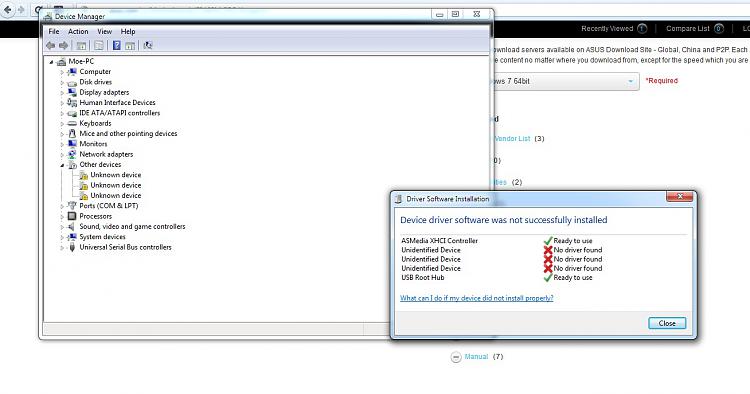| Sun 10-Gigabit Ethernet PCI-X Adapter Installation and User’s Guide |
| A P P E N D I X D |
PCI serial port is serial port connected to PCI bus (not as old COM port). Likely you will find a driver at PC/motherboard support site. The exact name of device you may find either thru device parameters or asking manufacturer's support. I suppose this device is not related with your BSOD. Please share memory dump to OneDrive for analysis. Provide an INF file that specifies the Ports device setup class and the Serial function driver as the service for the port. To configure a serial port as COM port, comply with the requirements that are defined in Configuration of COM Ports.
| Installing the Sun 10-Gigabit Ethernet Device Driver on Linux Platforms |
This appendix explains how to install the Sun 10-Gigabit Ethernet PCI-X device driver in a Linux environment. This appendix contains the following sections:
Setting Up the Driver in a Linux Platform
If your system uses the Linux operating system you will need to perform the following procedure to be sure the Sun 10-Gigabit Ethernet device driver is properly installed and loaded.
To Set Up the Driver in a Linux Platform |
1. Build the 10-Gigabit Ethernet driver:
- For RedHat, use the following command:
where the version is the minor version number such as:
sun-10-gigabit-kernel-1.0.82.6-1.src.rpm
2. Build the man pages (optional):
- For RedHat, use the following command:
3. Change to the rpm directory:
- For RedHat, use the following command:
4. Install the 10-Gigabit Ethernet rpms, using the same command for both RedHat and Suse:
5. Use the depmod command to register the Sun 10-Gigabit Ethernet module:
6. Load ixge driver for all instances:

7. Verify that the driver is loaded.
In the following example, the ixge driver is shown in bold italic. On your system the driver will be indistinguishable from the other modules.
8. Run the dmesg command to see which devices the ixge driver was mapped to:
9. Add the ixge interfaces to the /etc/modules.conf file.
10. Use the ethtool command to check the parameter configurations that apply to the ixge driver.
Tuning for Maximum Performance
The following tunings will improve the performance of the Sun 10-Gigabit Ethernet device driver on a system running the Linux operating system.
1. Create a performance tuning script (for example, ixge_perf.sh), and edit this file to add the interface or device ID of Sun 10-Gigabit Ethernet adapter.
2. Create the conf file (for example, sysctl_ixge.conf) that will be called by the sysctl utility.
Gigabyte Port Devices Driver

Setting Driver Parameters in a Linux Environment
In a Linux operating system, the driver parameters can only be set at the time the driver is loaded. If you have already loaded the driver and have not set the parameters at the same time. Remove the driver and reinstall it.
To Set ixge Parameters in a Linux Environment |
1. Remove the Sun 10-Gigabit Ethernet PCI-X device driver, if it is already loaded.
2. Load the Sun 10-Gigabit Ethernet PCI-X device driver:
or you can use the insmod command:
where VAL1 applies to the first ixge interface and VAL2 to the next interface and so on.
TABLE D-1 lists the tunable ixge driver parameters for Linux operating systems, and describes their function.
Keyword | Description |
|---|---|
Valid Range: 0-3 (0=none, 1=Rx only, 2=Tx only, 3=Rx&Tx) Default: Read from the EEPROM If EEPROM is not detected, default is 3. This parameter controls the automatic generation (Tx) and response (Rx) to Ethernet PAUSE frames. | |
Valid Range: 64-4096 Default Value: 1024 This value is the number of receive descriptors allocated by the driver. Increasing this value allows the driver to buffer more incoming packets. Each descriptor is 16 bytes. A receive buffer is also allocated for each descriptor and can be either 2048, 4056, 8192, or 16384 bytes, depending on the MTU setting. When the MTU size is 1500 or less, the receive buffer size is 2048 bytes. When the MTU is greater than 1500 the receive buffer size will be either 4056, 8192, or 16384 bytes. The maximum MTU size is 16114. | |
Valid Range: 0-65535 (0=off) Default Value: 72 This value delays the generation of receive interrupts in units of 0.8192 microseconds. Receive interrupt reduction can improve CPU efficiency if properly tuned for specific network traffic. Increasing this value adds extra latency to frame reception and can end up decreasing the throughput of TCP traffic. If the system is reporting dropped receives, this value may be set too high, causing the driver to run out of available receive descriptors. | |
Valid Range: 64-4096 Default Value: 256 This value is the number of transmit descriptors allocated by the driver. Increasing this value allows the driver to queue more transmits. Each descriptor is 16 bytes. | |
Valid Range: 0-1 Default Value: 1 A value of 1 indicates that the driver should enable IP checksum offload for received packets (both UDP and TCP) to the adapter hardware. |
To Configure VLANs in a Linux Environment |
1. Ensure that the ixge module is loaded:

2. Plumb the Sun 10-Gigabit Ethernet PCI-X interface:
where xxx.xxx.xx.xxx = the IP address of the interface.
3. Insert the vlan module:
Gigabyte Port Devices Drivers
4. Add vlan instance (VID):
5. Configure ixge vlan (eth2 in this example):
Gigabyte Port Devices Driver Update
where xxx.xxx.xx.xxx = the IP address of the interface.
To Configure Bonding for Multiple ixge Interfaces |
1. Modify /etc/modules.conf file by adding these lines:
Where:

bond0 is the bonding device.
max_bonds is the number of bond interfaces to be created.
mode specifies the bonding policies.
miimon is the frequency in milliseconds that MII link monitoring will occur.
Gigabyte Port Devices Driver Windows 10
Refer to Linux documentation for more information.
2. Load the bonding driver:
3. Configure bond0 interface.
In this example, bond0 is the master of the two interfaces eth2 and eth3.
| Sun 10-Gigabit Ethernet PCI-X Adapter Installation and User’s Guide | 819-0938-13 |
Copyright © 2008 Sun Microsystems, Inc. All Rights Reserved.




